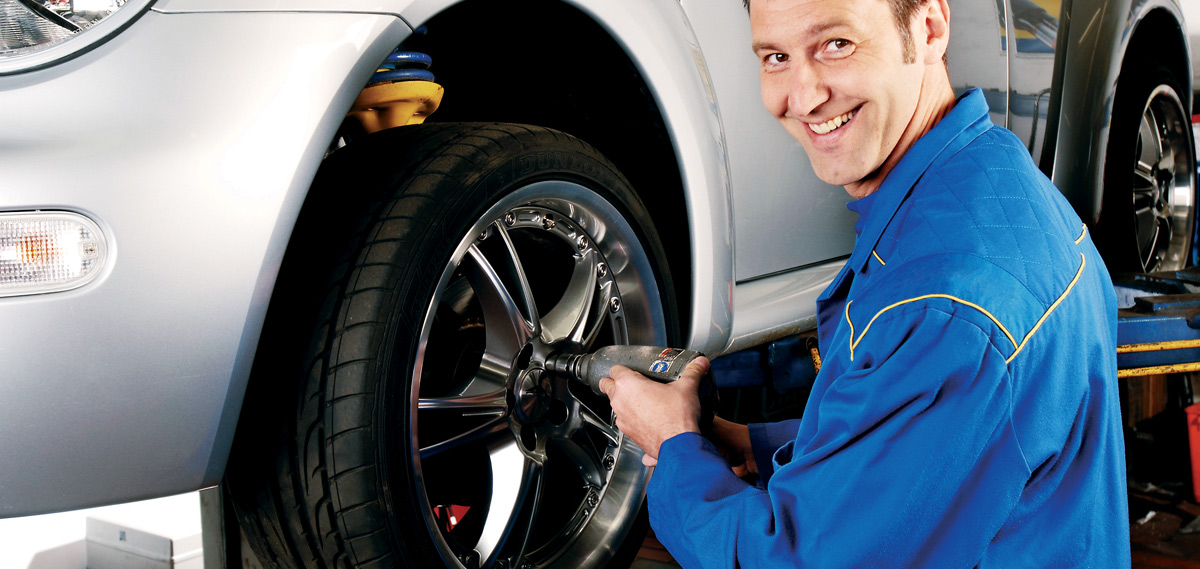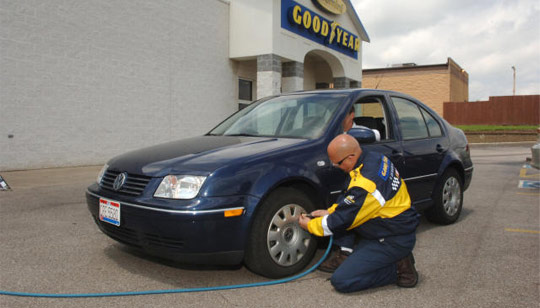Inspections and Repairs
Even if you don’t put a ton of miles on your vehicle, you should inspect your tyres at least once a month and always before long trips. It’s important to keep an eye out for excessive or irregular tread wear, under inflation, or damages like scrapes, bulges, cracks, punctures and more. If any of these are present, or if you’re experiencing continuous pressure loss, the tyre should be dismounted and inspected for damage by a trained professional to see if a repair can be made.

Tyre wear & tear
Misalignment of the front or rear tyre can cause rapid or even wear. Front-wheel-drive vehicles and those with independent rear suspension require alignment of all four wheels, instead of just two. Getting your alignment checked as specified in your vehicle’s owner’s manual is the recommended way to prolong tyre life.1
Sometimes, irregular tyre wear can be corrected by rotating your tyres. Consult your vehicle’s owner’s manual or visit a store location near you to find the appropriate rotation pattern for your vehicle. If your tyres show uneven wear, ask a Goodyear expert to check for and correct any misalignment, imbalance or other mechanical problems involved before rotation.1
A tyre’s tread directly affects how it grips the road, so it’s important to regularly inspect it visually for signs of uneven wear. These signs can include high or low areas, or unusually smooth ones.1
1. “Be Tyre Smart,” The Rubber Manufacturers Association

Inspecting your tyres can help you find punctures or other visible signs of damage that would require replacement.
Repairs
It’s crucial to know when it’s okay to have a tyre replaced and when a tyre should be replaced.
- If a tyre loses air pressure, it should be removed for an internal inspection.
- Driving on a flat tyre for even a short distance can ruin it.
- Most punctures, nail holes, or cuts up to ¼ in. (.64cm) can be repaired if the damage is confined to the tread.
- Do not repair any sidewall or tread punctures larger than ¼ in. (.64 cm), and NEVER repair tyres worn below 1/16 in. (.16cm)
Wheel balance and alignment
Having your tyres balanced and your vehicle properly aligned is important for tyre longevity and vehicle performance.
- Unbalanced tyres cause road vibration, which can lead to driver fatigue, premature tyre wear (also known as cupping or dipping), and unnecessary wear to your vehicle’s suspension.
- Tyres should be balanced whenever they’re mounted on wheels.
- They should be rebalanced at the first sign of a vibration or shimmy, and once a year.


